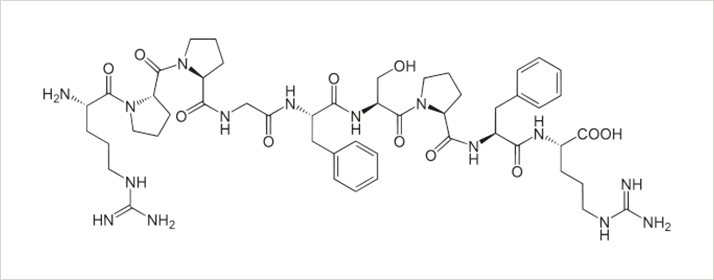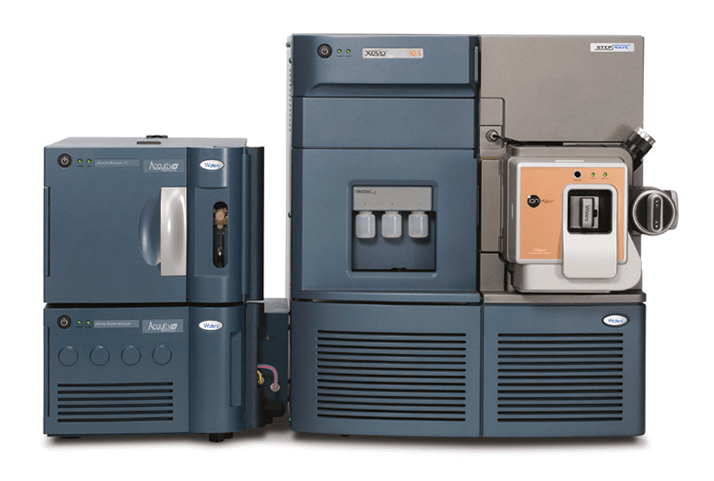Introduction
The need for robust and sensitive analysis of peptide species challenges both the chromatographic separation and mass spectrometry. Peptides in general are often difficult to analyze by LC-MS/MS, as mass spectrometer (MS) sensitivity is low due to the formation of multiple precursors and poor or overly extensive fragmentation, making liquid chromatography (LC) and sample preparation even more critical. A previous application note (720004833EN) described in detail the development of a fast, flexible analytical scale, SPE-LC-MS/MS method for the quantification of the peptide bradykinin (Figure 1) in human plasma for use as a biomarker in the preclinical or discovery setting.1 Accurate quantification of bradykinin in plasma is particularly challenging because it is present in low pg/mL levels, is rapidly metabolized, and is also artificially produced during blood sampling and sample preparation via proteolytic processes.2

 Figure 1. Representative structure and amino acid sequence of bradykinin.
Figure 1. Representative structure and amino acid sequence of bradykinin.In this work, the LC-MS platform was updated to incorporate the use of ionKey/MS System which integrates the UPLC® analytical separation directly into the source of the MS (Figure 2). The iKey chromatographic separation device (150 μm ID), shown in Figure 3, contains the fluidic channel, electronics, ESI interface, heater, eCord, and the chemistry to perform UPLC separations. Additionally, this technology offers significant increases in sensitivity compared to 2.1 mm ID chromatography, making it ideal for peptide analyses. Most bioanalytical LC-MS/MS assays often consume high volumes of both solvent and sample, thus increasing the cost of the assay and limiting the number of replicates that can be analyzed. In addition to the sensitivity increase ionKey/MS System provides over the 2.1 mm diameter scale, it also reduces solvent and sample consumption and provides enough sample to perform multiple injections that may be required to meet incurred sample reanalysis (ISR) guidelines.
 Figure 2. ionKey/MS System: comprised of the Xevo TQ-S, the ACQUITY UPLC M-Class, the ionKey source, and the iKey Separation Device.
Figure 2. ionKey/MS System: comprised of the Xevo TQ-S, the ACQUITY UPLC M-Class, the ionKey source, and the iKey Separation Device. Figure 3. iKey Chromatographic Separation Device.
Figure 3. iKey Chromatographic Separation Device.




